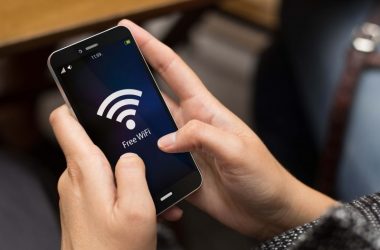The launch day for the Palm Pre smartphone, will be a big day all around for Palm, struggling carrier Sprint Nextel and anyone looking for another slick alternative to the Apple iPhone. But next Friday may have even more historic significance for all those parties, according to Avi Greengart.
“If we're still talking about Palm by the end of next week, then they won,” said Greengart, an industry analyst at Current Analysis.
The launch of a new generation of the iPhone, widely expected to take place at Apple's Worldwide Developer Conference (WWDC) in San Francisco on Monday, is likely to suck all the air out of the mobile-phone room just two days after the Pre goes on sale at Sprint stores across the U.S., Greengart said. Speculation is revolving around a possible iPhone price cut to $99, video camera capability, a faster processor and other significant changes to that blockbuster handset. But Apple may not even need those.
“Apple could do absolutely nothing next week, and it would still be a juggernaut,” Greengart said. “Apple is in total command of its destiny.”
Palm, by implication, is not. The company pioneered handheld computers in the 1990s and later had a hit with one of the first smartphones, the Treo. But after letting its hardware and OS languish, the company needed the fresh start that the Pre and its brand-new WebOS platform represent. Fortunately for Palm, it's entering a smartphone market that is steadily growing and has room for several other platforms in addition to the iPhone, Greengart said.
Average consumers are starting to embrace smartphones for their extended data capabilities, moving the devices beyond technology aficionados, according to industry analysts. Worldwide smartphone sales grew 12.7% to 36.4 million units in the first quarter of this year, even as overall handset sales fell 9.4%, according to Gartner. The iPhone and Research In Motion's BlackBerry devices were the biggest winners, the research company said.
While that means more opportunity for the Pre to succeed, competition is also growing, with more than a dozen new Android-based phones coming later this year and the Nokia N97 going on sale in the U.S. later this month. The stakes are high for both Palm and Sprint.
The third-largest U.S. mobile operator sees the new Palm as a chance to show off its network and an improved customer experience, according to David Owens, director of consumer marketing. Sprint was once plagued by low marks on customer service but has made great strides in the past several quarters, he said.
The Pre is so important to Sprint that the company has added support capabilities just for the new product. Each Sprint store will have a designated Pre expert and a unit for customers to try out. Palm staff will join Sprint teams in the carrier's call centers, and experts from both companies will be able to route and field in-store customers' questions via an instant messaging system, Owens said. Sprint expects shortages of the Pre at first but has set up waiting lists, he said.
But the Pre is far more important to Palm than to Sprint, according to Gartner analyst Ken Dulaney.
“It's a bet-the-company product,” Dulaney said.
Palm has met the challenge, at least in the company's traditional area of strength in personal information management, Greengart of Current Analysis said. The Pre will be able to draw in contact and calendar information from sites such as Facebook. In addition, its operating system lets users run more than one application at once. There is nothing else quite like it on the market, he said.
“Palm has done a great job with creating a gesture-based interface that's really, really polished,” Greengart said.
Palm is also launching its own store for WebOS applications, called the App Catalog. It will launch Saturday in beta testing, with a few hand-picked software partners, and later be opened to other developers.
However, the Pre does fall short for enterprise use, at least so far, Gartner's Dulaney said. Before it will recommend a smartphone for enterprises, Gartner requires it to allow for two policies: to remotely wipe the data off a device that is lost or stolen, and to require hard-to-guess passwords and force users to refresh them periodically. Whereas BlackBerrys have those capabilities and the iPhone has recently added them, the Pre doesn't have them yet, he said. Palm told Gartner it is aware of the shortcomings and is working on solving them, according to Dulaney.
Those upgrades might be available by the time the Pre's second moment of truth arrives. That is likely to come in about eight months, when AT&T and Verizon Wireless are expected to have rolled out the device for their customers, Greengart said.
If the Pre's launch on those larger carriers generates as much interest as this one, and if the App Catalog is populated with a wide array of exciting software, then the device will have arrived, Greengart said.





